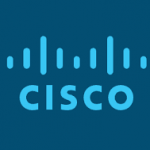
Transforming Broadband, Powering Digital India
I’m very glad to tell you that Cisco has won two accolades at the prestigious sixth BCS Ratna Awards. It has been awarded ‘Best Middleware Company’ for Videoscape Media Highway and ‘Best Cable Broadband Technology Provider’ for DOCSIS 3.0. This is indeed a proud moment for Cisco as it not only reinforces Cisco’s position as a leading technology enabler for the broadband segment, but also recognizes its contribution towards realizing the Digital India initiative and the vision of transforming the lives of 1.2 billion Indians.
The Digital India initiative, launched by the Government with the objective of digitising the country, places equal emphasis on broadband highways and national highways. This underlines the crucial role broadband service providers will play in taking connectivity to the end consumers. When the Department of Telecommunication revised the definition of broadband from 256 kbps to 512 kbps, the drop in the number of wireline subscribers was marginal, indicating that service providers were already offering broadband.
According to TRAI, there are currently 97.37 million broadband subscribers in India as of February 2015 with a monthly growth rate of 3.05%. Of this, 15.45 million are wireline subscribers and 81.92 million are wireless users. On the other hand, there are around 100 million cable homes in the country but less than one million of these cable subscribers enjoy broadband via the cable infrastructure. This means that there are a potential 99 million homes as total addressable market for cable broadband using DOCSIS as the technology of choice. Even at a conservative estimate of 30% conversion ratio, this translates to 30 million broadband subscribers on DOCSIS technology.
However, to address the new demands, to evolve with the dynamic landscape and to fend off competition from other service providers, MSOs will have to offer better services to subscribers, at the same time reducing opex and increasing revenues. And this is where their investments in technology will yield requisite results. One such technology is DOCSIS 3.0, a cable standard developed by CableLabs which enables high-bandwidth access networks and which is also a key component of Cisco IP Next Generation Network.
DOCSIS 3.0 enables service providers to offer service plans up to 300 mbps for download and up to 120 mbps for upload. This is a significant increase from DOCSIS 2.0 in upstream speeds from 20 mbps to 120 mbps and downstream speeds from 50 mbps to 300 mbps. To enable service providers to achieve these speeds, Cisco offers DOCSIS 3.0-compliant channel-bonding technology that uses multiple channels to deliver more packets simultaneously and provide high-speed data rates several times faster than existing ADSL and DOCSIS 2.0 equipment.
While upgrading existing infrastructure may be a challenge, the cost of investing in network could be recovered over a longer period. ARPUs from broadband subscriptions are generally 3x to 5x those of traditional pay TV subscriptions and are accretive to these. Let us assume that an ISP-licensed MSO upgrades 25% of its network with a capability to offer DOCSIS 3.0 based broadband services, and 30% of these subscribers take this service, then 25% x 30% = 7.5% of the total subscriber base take broadband. These 7.5% of broadband subscribers would contribute 3x to 5x the revenue of the non-broadband subscribers, resulting in up to 30% additional ARPUs for the MSO (3x to 5x of 7.5% i.e. 22.5% to 37.5%). As per a business model created for some of the MSOs, this 30% additional ARPUs would repay the cost of upgrading the MSO’s network in approximately 3 years with 30% EBITDA.
The Digital India programme will determine the economic and social progress we make as a country and broadband will undoubtedly be a significant enabler for both businesses and individuals. Given these factors, a transformation of the broadband landscape in India is but the beginning. Based on what we have seen so far, the next few years promise to be exciting ones for the entire ecosystem and we at Cisco are certainly looking forward to playing a key role in this.
Tags:
- ADSL
- Broadband landscape
- Cable access
- cable broadband
- cable operators
- Cisco
- Digital Cable TV
- Digital India
- Digitization
- DOCSIS 3.0
- India broadband
- Service Provider
- SP video
- Telcos
- TRAI
- Transformation



